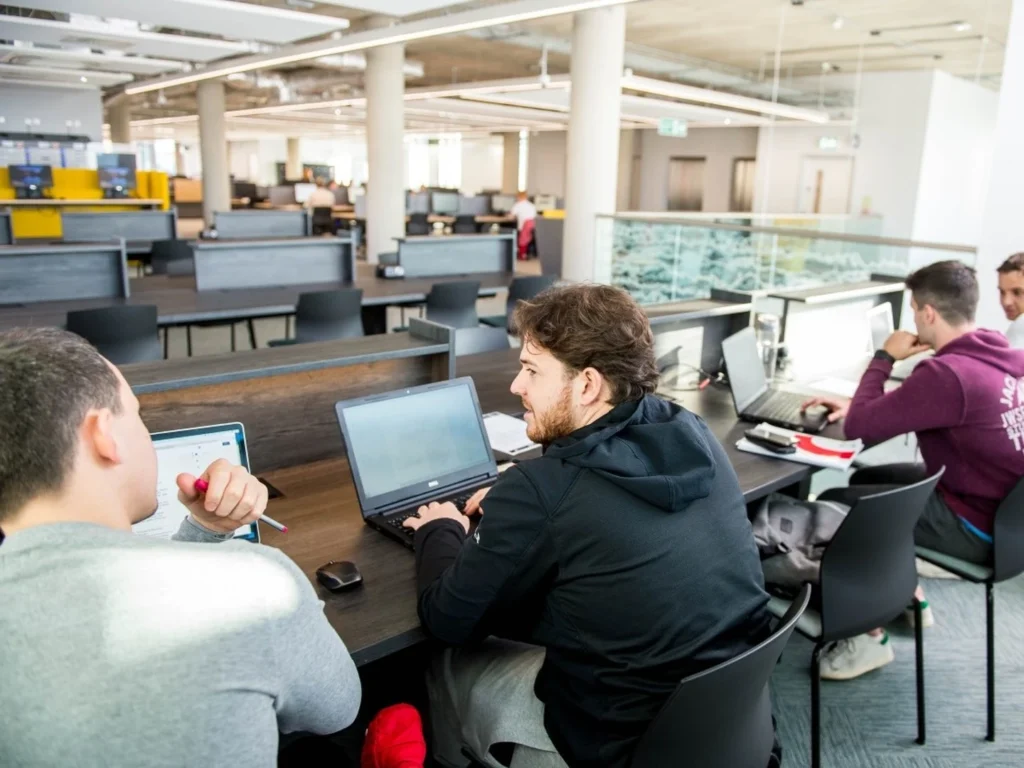Digital Services » Library & Learning Resources (LLR) » Support for Staff » Copyright Hub
By familiarising yourself with the rules, you can protect yourself and your current or future employer from committing a breach of copyright. You can also identify which resources can be used freely and to what extent.
To get to grips with the main points of the law, see Copyright Basics and other sections below for more focused guidance on particular topics.
Copyright is a set of rights assigned to protect creative works.
These rights give the holder the ability to determine how their work is used, copied, adapted or distributed.
Having a set of ‘exclusive’ rights in copyright law enables the copyright holder to control the use of their work and to earn from it.
Copyright is automatically assigned to the creator of an original piece of work – you don’t need to apply for it, but it’s a good idea to keep a dated digital or physical copy of your work to prove when you created it.
Copyright only protects the concrete expression of ideas, not ideas themselves.
This includes works in which the copyright has expired, and works that have been given a Creative Commons license
A work needs to be permanent and in a fixed state, such as by being written down or recorded.
Examples include calendars, height and weight charts, and tape measures.
Copyright protection provides creators with the incentive to invest time, effort, and resources in creating new and innovative works. Knowing that they can reap the rewards of their creations encourages a vibrant creative industry.
Copyrighted works have economic value, and creators can profit from their creations through sales, licensing, and other commercial opportunities.
Copyright helps preserve and promote cultural heritage by protecting traditional expressions and artistic works unique to specific communities.
Copyright protection fosters technological advancement by safeguarding the rights of innovators and encouraging further research and development.
Copyright also serves the public interest by balancing the rights of creators and allowing reasonable access to creative works through fair dealing, educational exceptions, and the public domain.
One aspect of copyright is the grant of exclusive rights to creators. These exclusive rights allow creators to exercise control over how their works are used and distributed.
Creators have the exclusive right to reproduce their works, meaning they can make copies of their creations in various forms, such as printing books, duplicating CDs, or creating digital copies,
Creators also have the exclusive right to perform their works publicly, such as in concerts or theatres, and display their works publicly, e.g. in art exhibitions or galleries.
Copyright allows creators to create derivative works based on their original creations. Derivative works are new works that incorporate elements or adaptations of the original, such as movie adaptations of books or remixes of songs.
The author of a work is the first person who creates it, and they are the first copyright owner.
The exception to this is if the work is made by an employee in the course of their employment; in this case, the employer is the first owner of any copyright in the work, subject to any agreement to the contrary.
Literary, dramatic, musical and artistic work – Author.
Sound recording – Producer.
Film – Producer and Principal Director.
Broadcast – Person making the broadcast.
Typographical arrangements of published editions – Publisher.
Computer-generated literary, dramatic, musical, and artistic works – Person who makes the arrangements necessary for the creation of the work.
You will usually need permission to use, alter or remix a work if it is still in copyright.
Note: even if your use is non-commercial, using someone else’s work without permission may still infringe their copyright. Crediting the author of a work is important, but it is not enough to avoid copyright infringement if you don’t have permission.
There are copyright exceptions which allow a person to use a work even if it is still in copyright
Examples include:
Copying for users with additional needs:
When using copyright exceptions, you must also apply ‘fair dealing’. This is specific to UK legislation – it is different from the US concept of ‘Fair Use’ and has no statutory definition.
It ensures adequate acknowledgement is given, and the use of the work doesn’t impact the rightsholder in a financial or reputational way.
Consider ‘how might a fair-minded and honest person have dealt with the work?’
Two initial questions you can ask:
Considerations include:
Fair dealing allows the use of copyrighted material for research and private study purposes.
Fair dealing permits the use of a reasonable portion of a copyrighted work.
Fair dealing considerations take into account the nature of the copyrighted work being used.
Fair dealing prohibits the use of copyrighted material in a way that would unfairly compete with the rights holder’s ability to exploit their work commercially.
While fair dealing allows for the use of copyrighted material without permission, proper attribution to the original source should be provided and the integrity of the work maintained.
Licences are used within universities to allow students and academics to use copyrighted works for educational purposes.
Copyright infringement occurs when someone uses, copies, distributes, or reproduces a copyrighted work without obtaining the necessary permission from the copyright owner.
To prove copyright infringement, the copyright holder must demonstrate three key elements:
Copyright infringement can lead to financial and reputational damage. Always attribute and treat work with the respect you would expect your own work to be treated. Although there is more you can do with copyrighted material due to the educational exceptions, you should always attribute correctly and use material fairly
Copyright infringement is a violation of intellectual property law and can lead to civil and criminal penalties. The copyright owner may seek damages, statutory fines, and the recovery of legal costs.
In many cases, the copyright owner may send a cease-and-desist letter to the infringer, demanding that they stop using the copyrighted material immediately.
Online copyright infringement may trigger DMCA takedown notices, resulting in the removal of the infringing content from websites and platforms.
Copyright infringement can damage the reputation of individuals and organisations, affecting future collaborations and job opportunities, and business relationships.
Always seek permission from the copyright holder before using their copyrighted material. This may involve obtaining licenses, signing agreement,s or using works under Open Access or Creative Commons licenses.
Understand the concept of fair dealing and ensure that your use of copyrighted material falls within the limits of these exceptions.
Utilise works in the public domain or under Creative Commons licenses that grant specific permissions for use.
Whenever possible, create your own original content or seek content from sources with clear usage rights, such as royalty-free stock libraries.
A licensing scheme that clearly shows what works are available for use without negotiation or legal representation.
Provision of unrestricted, free online access to peer-reviewed and scholarly research.
The use of copyrighted material without the permission of the copyright holder.
Learn more about:


Learn more about:
Learn more about:

